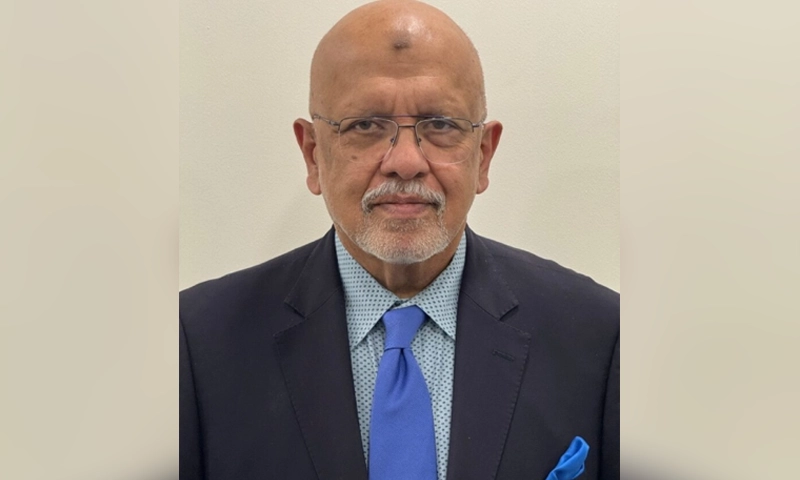- Web Desk
- Yesterday

With strings attached
LAHORE: Donald Trump is back, and his latest move has sent shockwaves across the world. By suspending US foreign assistance for 90 days, he has not only disrupted military aid and development programs but also signaled a drastic shift in America’s global strategy. The Trump administration has ordered a sweeping review of USAID, the agency responsible for distributing billions in aid, and placed dozens of senior officials on leave, making it clear that resistance to his policies will not be tolerated.
For years, US foreign aid has been a powerful tool of influence. It has never been just about financial assistance; it has been about shaping ideologies, pushing governance models, and exporting American values. Joe Biden’s administration made this explicit by tying aid to liberal values, funding LGBTQ initiatives, and promoting social reforms globally. A striking example was the $500,000 grant to train English teachers in Pakistan, focusing on transgender youth. This aligns with the theory of Liberal Internationalism, which argues that powerful democracies use financial support as a means of spreading their political ideals. But Trump’s decision to freeze aid is a clear departure from this playbook, indicating that his second term will be defined by hard-line nationalism.
The immediate impact of this decision is already unfolding. The $68 billion US foreign aid budget is now frozen, with only two exceptions, Israel and Egypt. Israel’s exemption makes sense; it remains Washington’s strongest ally in the Middle East and acts as a regional watchdog for American interests. But Egypt’s inclusion is a calculated move. Trump wants Egypt to accept Palestinian refugees from Gaza, shifting the humanitarian burden away from Israel. With Jordan already hosting 2.3 million Palestinians and rejecting further migration, Trump’s push for Egypt to absorb refugees is a diplomatic pressure tactic designed to further Israel’s strategic goals.
The consequences of this policy shift are particularly devastating for Afghan refugees. Around 40,000 Afghans, who were promised visas under Biden’s administration, are now stranded. With no pathway to the US, their options are rapidly shrinking to Pakistan and Qatar, both of which are already grappling with economic and political challenges of their own. Meanwhile, Ukraine, another major recipient of US aid, is bracing for impact. The US Senate recently approved a $95 billion aid package for Ukraine, Israel, and Taiwan, reinforcing America’s military and strategic presence in these regions. But with Trump’s history of skepticism toward Ukraine, there is growing speculation that this assistance could be next on the chopping block, potentially giving Russia an upper hand in the war.
As Trump pulls back foreign aid, he is simultaneously ramping up trade wars and economic nationalism. His administration has already imposed aggressive tariffs on China, Mexico, and even allies like Canada. He has openly criticized the European Union, accusing it of treating the US unfairly, and has taken aim at the American bureaucracy, removing officials he views as obstacles to his policy agenda. The State Department has already confirmed the end of Donald Lu’s term, a significant move considering Lu’s controversial role in Pakistani politics.
In the Middle East, Trump’s approach to Saudi Arabia remains a complex balancing act. He has subtly criticized Crown Prince Mohammed bin Salman (MBS), blaming Saudi Arabia and OPEC for keeping oil prices high, a move that has directly benefited Russia. But at the same time, Saudi Arabia remains one of America’s biggest economic partners, recently announcing $600 billion in US investments. The kingdom has aggressively expanded its global economic footprint, buying into sports leagues like football, golf, and boxing, and increasing its stake in US infrastructure and tech companies. Trump, in turn, is pushing for even greater Saudi investment, calling for a $1 trillion deal while demanding lower oil prices to stabilize the American economy.
The message behind Trump’s actions is clear: “America First” is back with full force. His administration is determined to redefine the US’s role in global affairs, slashing foreign aid, imposing economic tariffs, and demanding maximum financial returns from international allies. NATO funding will likely be reduced, European partners will be pressured to shoulder their own security costs, and traditional aid-dependent nations will be forced to seek alternative backers—whether it be China, Russia, or regional powers like Saudi Arabia.
For Pakistan, this shift raises critical questions. With Trump actively engaging with India, it is only a matter of time before Pakistan finds itself under his scrutiny. The country has long relied on a delicate balance between U.S. financial support and strategic partnerships with China and the Gulf states. But with Washington now prioritizing economic self-interest over diplomatic alliances, Pakistan may soon have to navigate a vastly different geopolitical landscape. As the world braces for another four years of Trump’s America, one thing is certain: the era of US global benevolence is over, and the age of transactional politics has fully begun.





